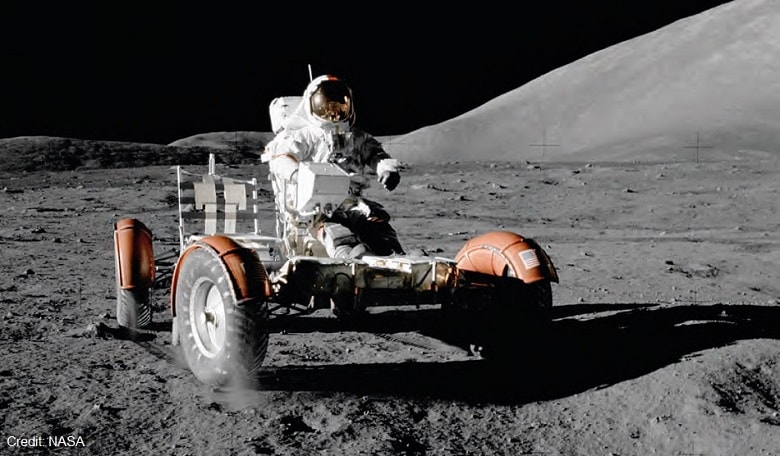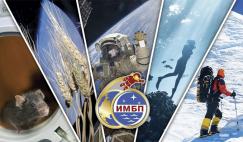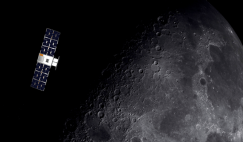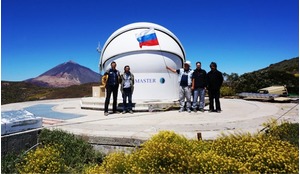Agrowing number of economists, including former treasury secretary Lawrence Summers and Dr. Paul Krugman are discussing the issue of the secular stagnation of the U.S., European, and Japanese economies. Their position is that the major economies are performing below their potentials for structural reasons since the 2008-2009 recession. In his keynote speech at the National Association of Business Economics policy conference in February of 2014, Summers laid out the evidence for secular stagnation1, arguing three propositions:
…as the United States and other industrial economies are currently configured, simultaneous achievement of adequate growth, capacity utilisation, and financial stability appears increasingly difficult. Second, this is likely to be related to a substantial decline in the equilibrium or natural real rate of interest. Third, addressing these challenges requires different policy approaches than are represented by the current conventional wisdom...
 The cockpit of a space shuttle. Investment in space technology is essential for economic growth.
The cockpit of a space shuttle. Investment in space technology is essential for economic growth.
Nobel laureate Paul Krugman in his New York Times economics blog also expounds on the subject2. He explicitly admits that existing monetary policy has become ineffective at providing economic growth for reasons that can be traced to secular stagnation.
According to these and other economists, past monetary stimulation, increased debt, and an ageing population is resulting in a situation where the cure has become the problem. This means that in the current environment existing economic tools are no longer providing growth of the kind enjoyed since the end of the Second World War. To those who have grown up post-WWII such secular stagnation may seem unique to our time, but it is not.
Alvin Hansen, a professor of economics at Harvard and a leading American proponent of Keynesian economics, was the first to develop the theory of secular stagnation and suggest solutions to restore economic growth. This was in a presidential address to the American Economic Association in December of 1938 entitled Economic Progress and Declining Population Growth.
His proposition was that the growth agents of the 19th and early 20th century had played out. These included population growth, the discovery of new land and resources, and technological innovation. Then came the Second World War with its associated post-war baby boom and the explosion of technological innovation. The effect was to render his solutions moot.
However, in the last few years Hansen’s propositions are being revisited as secular stagnation indicators have reasserted themselves.
Hansen’s Argument
Hansen’s diagnosis3 for the late 1930s secular stagnation was that the closing off of the American frontier, the large fall off in population growth and the slowing of technological advancement were at fault. This parallels modern economists’ reasoning. Hansen’s view from 1938 is thus instructive:
…Spiethoff was quite right when he argued that a vigorous recovery is not just spontaneously born from the womb of the preceding depression. Some small recovery must indeed arise sooner or later merely because of the growing need for capital replacement. But a full-fledged recovery calls for something more than the mere expenditure of depreciation allowances. It requires a large outlay on new investment, and this awaits the development of great new industries and new techniques. But such new developments are not currently available in adequate volume. It is my growing conviction that the combined effect of the decline in population growth, together with the failure of any really important innovations of a magnitude sufficient to absorb large capital outlays, weighs very heavily as an explanation for the failure of the recent recovery to reach full employment...
Krugman once wrote that he hoped for an alien invasion as an economic stimulus
This well describes our current economic recovery. Summers further quantified his views in an October 2014 presentation, explicitly appealing to Hansen’s work4. Hansen’s view was that government investment in technological innovation would be crucial in transcending secular stagnation. However, modern economists tend to avoid promoting new technology development spending (Summers explicitly and Krugman implicitly), and none of them approach Hansen’s emphasis. However, others outside of the realm of the economists have made this exact point.
Peter Thiel’s Echo of Hansen
Paypal co-founder and Silicon Valley venture capitalist Peter Thiel has made a similar point to Hansen regarding lackluster technological progress hindering economic growth. He made this point in his recent book Zero to One, Notes on Startups or How to Build the Future. The term “Zero to One” is shorthand for new technology developments that have broad economic prospects and impact.
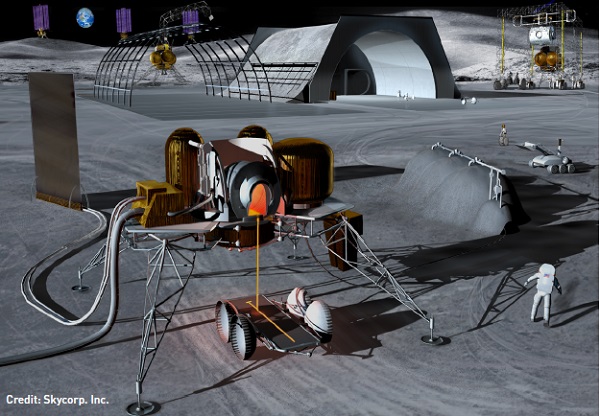 Serious investment in major space projects is what the economy really needs.
Serious investment in major space projects is what the economy really needs.
Thiel’s observation is that recent times have been marked by broad horizontal progress (globalization), as rapidly industrialising and emerging economies such as China and India are built around replicating the American model. While building skyscrapers, superhighways, and mega-airports is progress, it is not innovation.
While it is obvious that information technology has advanced in the last few decades, we have not had the broad advance in new technology necessary to absorb large capital flows, create jobs, assure prosperity and advance a global civilization. Thiel states: “In a world of scarce resources, globalization without new technology is unsustainable.”
This is a strong echo of the Hansen thesis that goes well beyond the thinking of the modern economists, though in jest Krugman once wrote that he hoped for an alien invasion as an economic stimulus. Thus we have a situation where a highly respected economist from a previous generation and modern ones largely agree on the causes of secular stagnation but offer divergent solutions.
Modern Keynesian economists have generally advocated an increase in public infrastructure spending for shovel-ready jobs, roads and railroads, and other non R&D expenditures. As the 2009- 2011 stimulus illustrated, even a trillion dollars was of limited and transitory utility. Also, overall U.S. government spending has increased by a trillion dollars a year since 2008, without resulting in the payoff that Summers argues will result. So what else could be done?
Space lags
Government R&D spending in space has dramatically lagged (ignoring the DoD space budget) despite NASA’s current $18 billion yearly budget. The current NASA budget is about 0.46% of federal spending. In the Apollo programme’s peak year the $5.9 billion FY-1966 NASA budget was 4.4% of the total. This percentage applied today would be $172 billion per year.
NASA’s budget plummeted by 37% in dollar terms and over 56% compared to the overall FY-1970 federal budget. The official NASA history states deficit reduction was the rationale for the agency budget crash. However, this is unsupported as expenditures grew from $134.5 to $195.6 billion in the same time period, a $61.1 billion increase or 45%5. The Vietnam War was responsible for a $23.5 billion and overall domestic spending increased by $37.6 billion indicating a clear shift in priorities of the federal government.
From the early Eisenhower years until the mid point of the Johnson administration (1953-1966) the Hansen view of promoting economic growth through technology development was the de facto guiding hand of federal expenditures. This, coupled with the Kennedy tax cuts, resulted in the largest decrease in the poverty rate in a century, from 27% in 1953, down to ~13% by 1967.
The R&D effect (to coin a phrase) is also shown in the civilian population to employment ratio, which began its dramatic rise in the 1960s, continued as the trained cadre of engineers and scientists from the Apollo era fuelled the nascent commercial tech boom of the 1970s, and accelerated during the Reagan/Bush I/Clinton years. The problems began during the Bush II years as the fall off in innovation, debt and monetary policy ineffectiveness began to dominate. This accelerated recently as debt loads continue to grow and the focus on non-R&D stimulus spending has failed to lift the economy.
Investment in Space
Large scale investment in space technology has been ignored in economic policy since the mid 1960s. The Johnson administration decisively turned away from the space race and its associated technology investment in 1967 by explicitly rejecting NASA’s post Apollo plans. This has not changed, even with the more than doubling of NASA’s budget during the Reagan/Bush years. Every single government study and independent commission report produced since the 1980s has strongly stated that NASA has been given far more to do than funding provided, yet at no time have the various reports’ recommendations been acted upon. Even so, NASA has produced remarkable scientific and technical results.
Even with the underfunding of the Space Station programme, today we have a remarkable edifice in the International Space Station (ISS). Additionally, NASA’s space science programme has led the United States into the history books as the first nation to fly spacecraft into orbit or to flyby every significant planet, moon, and now asteroids, in our solar system. Thus the basis is in place for an explosion in activity that can transform the national and global economy for decades or even centuries, the activity of the economic and industrial development of the solar system.
This effort touches upon all three of the Hansen rationales for economic growth. NASA’s science missions have conclusively shown us that our solar system is rich with resources that can be used to displace some of the most toxic means of mining resources on the Earth. These resources, such as industrial quantities of Platinum Group metals, available from the Moon and near Earth asteroids could force down prices enough to facilitate the hydrogen economy on the Earth.
The ISS capabilities have never been taken advantage of such as the ability to assemble space vehicles headed for commercial or exploration missions. Expanding the ISS into an industrial facility could enable the goal of providing all of Earth’s citizens with low cost Internet connections via multi-hundred kilowatt platforms in geosynchronous orbit, a project my company is working to develop.
An industrial development on the Moon, where we proved human single stage to orbit technology with the lift-off of the lunar lander in 1969, would completely transform the way that humans travel in the solar system. It would do this by utilising the aluminium, titanium, and other resources, first prospected by the Apollo crews, and turning them into spaceships for cargo and to carry humans to solar system destinations. All of this has become practical due to the rapid pace of terrestrial robotics, 3D printing, and other manufacturing technology.
Larry Summers advocates that 1% of the federal budget be dedicated to increased government infrastructure spending. We already spend enormous amounts on infrastructure, but if a similar amount, $39 billion per year, were spent on developing this solar system spanning infrastructure, then our economies would be radically transformed within 20 years and secular stagnation would again become a curiosity of economists.
We have truly tried everything else as our leading economists admit, now is the time to do the right thing, in space.
This is not to say that all of this would be federal expenditures, indeed inefficient capital allocations in cost plus contracting are at the root of our military industrial complex problems today. It is rather that methods such as the current public private partnerships producing our new crew and cargo vehicles for the space station, as well as tax policy changes that new entrants (Zero G Zero Tax) be used6.
Do the right thing
At the end of the day, half measures are insufficient. Summers, Krugman, and Hansen are all of the Keynesian economics school. However, Hansen’s prescription for escaping secular stagnation has been ignored by his modern brethren, who favour ‘traditional’ infrastructure spending. Recent experience shows that shovel-ready jobs such as roads and railroad spending have done little to change the equation, leading to secular stagnation.
Hansen’s prescription of technology development spending was crucial to our victory in WWII and the development of our globally dominant aerospace industry. In the 50s and 60s it was the Eisenhower/ Kennedy/LBJ technology spending that put mankind on the Moon, provided the seed money for Silicon Valley’s initial growth, and did more to lower poverty than the trillions spent since then on other priorities.
It is time for this discussion to be had. Winston Churchill once said that Americans can be counted on to do the right thing, after trying everything else. We have truly tried everything else as our leading economists admit, now is the time to do the right thing, in space.
References
1: Summers, L.H.; U.S. Economic Prospects: Secular Stagnation, Hysteresis, and the Zero Lower Bound, Business Economics, Volume 49, No 2, 2014
2: Krugman, P.; Three Charts on Secular Stagnation, New York Times online, 5/7/2014, accessed 4/24/15, http://krugman.blogs.
nytimes.com/2014/05/07/three-charts-on-secular-stagnation/?_ php=true&_type=blogs&_r=2
3: Hansen, A.; Economic Progress and Declining Population Growth, Population and Development Review Vol. 30, No. 2 (Jun., 2004), pp. 329-342 (secondary reference to an original December 1938 Business Economics Article)
4: Summers, L.; Reflections on Secular Stagnation, October 31, 2014, http://www.kvsweb.nl/nl/webmanager/userfiles/Presentatie Larry Summers 31-10-14.pdf, accessed April 24, 2015
5: U.S. Federal Budget Historical; https://www.whitehouse.gov/sites/ default/files/omb/budget/fy2015/assets/hist.pdf, accessed 4/23/15
6: Wingo, D.; 2015, The Year for Zero G Zero Tax?, blog post, https:// denniswingo.wordpress.com/2014/12/02/2015-the-year-for-zerog- zero-tax/, accessed 4/21/15





